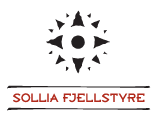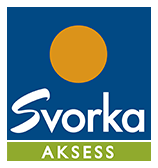Masteroppgave om Nasjonal Turistvei
Publisert 05.11.2009 00:48
 Monica Breiby har nettopp forsvart sin masteroppgave om innovasjon rundt 2 Nasjonal Turistvegstrekninger.,Rondane og Sognefjellet. Hun har skrevet en artikkel som skal publiseres i et utenlandsk tidskrift. sollia.net bringer artikkeln i sin helhet. sjå den her:
Monica Breiby har nettopp forsvart sin masteroppgave om innovasjon rundt 2 Nasjonal Turistvegstrekninger.,Rondane og Sognefjellet. Hun har skrevet en artikkel som skal publiseres i et utenlandsk tidskrift. sollia.net bringer artikkeln i sin helhet. sjå den her:
Her er hennes oppsummering:
The art and design installations have increased the quality and variety of attractions and may in the future open up new markets, thus leading to greater production and employment along both the National Tourist Routes. Results from the selected studies show that both product and process innovation especially have significant effects on economic variables such as firm competitiveness, employment, productivity growth and lower costs. Even though it is almost universally accepted that technological change and other kinds of innovation have important effects on economic variables, Nordin et al. (2005) have argued that the exact relationships between innovations and these variables are the subject of continuing debate. This issue would make for an important research topic in the future. The relationship between the different types of innovation would also be a fruitful research topic.
According to Hjalager et al. (2008) the investigation of the driving forces behind the innovate practices is needed. This Tourist Route project is an example of what they describe as “the public sector as a driving force”, which features the building new infrastructure etc. (p. 46). We might in this case even talk about “the art and design as a driving force” for innovative activity along two National Tourist Routes. This supports a study from Haraldsen et al. (2005) that focused on two strategies for culture-based business development: culture as an attraction (e.g., the Guggenheim Museum in Bilbao) and culture as a driving force (e.g., Huddersfield in England). For the two National Tourist Routes and the results from this study, it would be worthwhile to consider culture, not only as a driving force, but as an attraction.
Rather than assuming what the actors think is innovative activity and the most successful with the Tourist Route project, it is necessary to understand how they describe it themselves. To do so, we need to ask the actors about their view. This study represents one attempt to convey the opinions of certain actors along two National Tourist Routes. It might contain useful information for the further development along the two Routes, and might even be useful for other National Tourist Routes. Because innovation is seen as a cumulative process that is context-dependent, I recommend other Routes to do their own research, with respect to innovative activity.



















